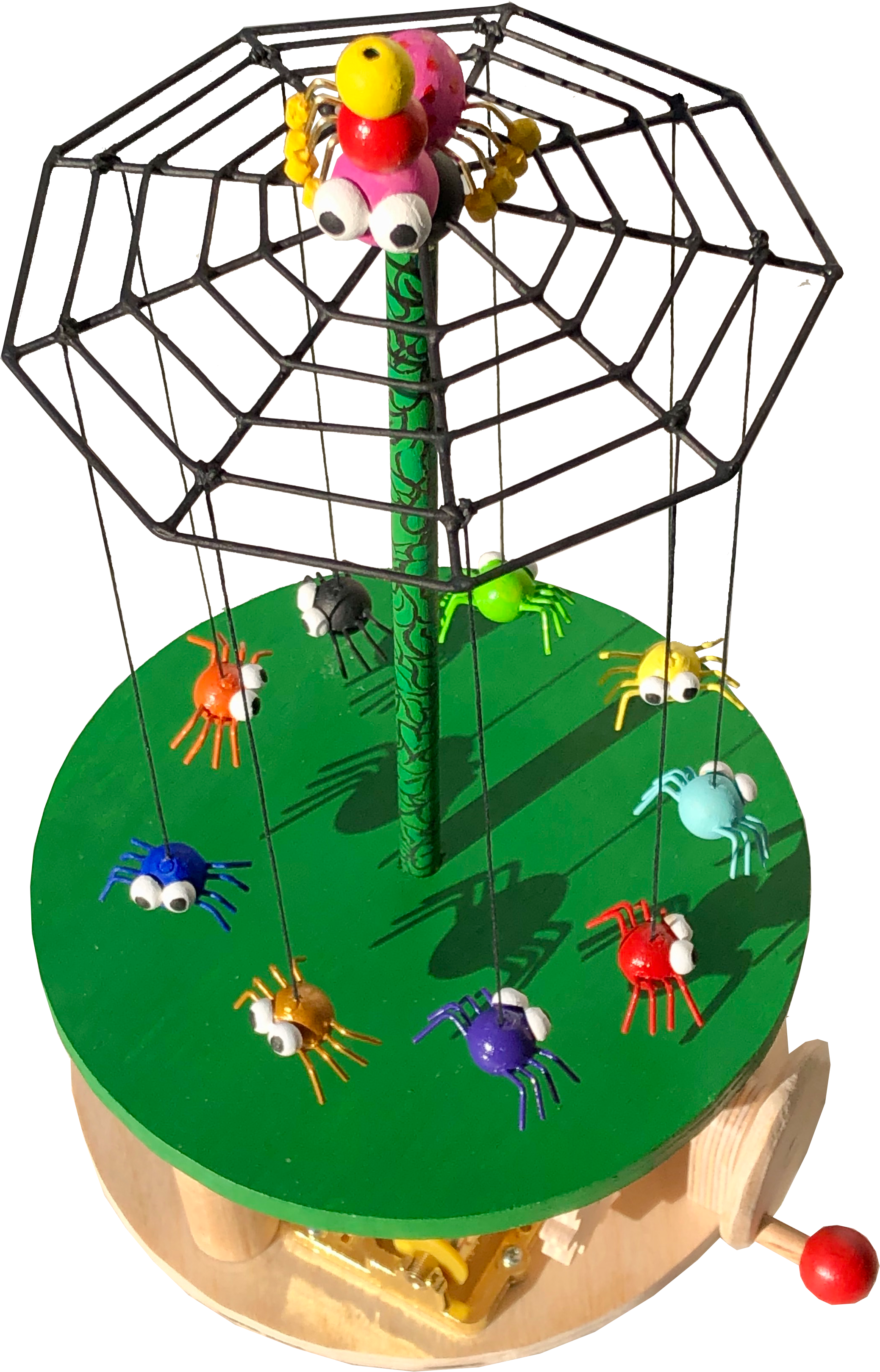
Artistic brief
There was an old spider who lived in quite a stew.
She had so many children, she didn’t know what to do.
So she span a nice roundabout from silken thread;
And whizzed them all around until she put them to bed.
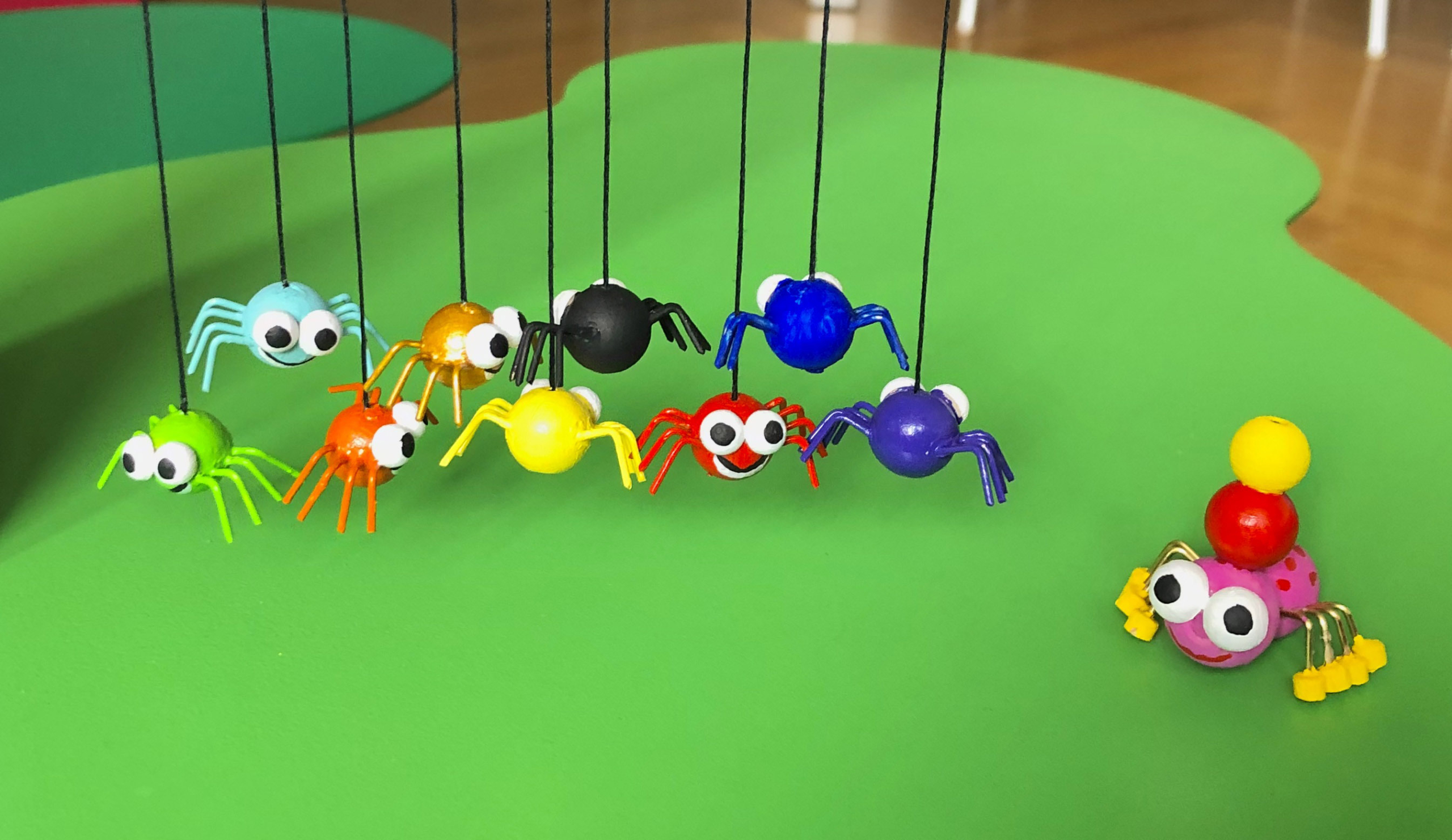
Mum spider was worried about the kids just hanging about and wondered what she could do to keep them busy.
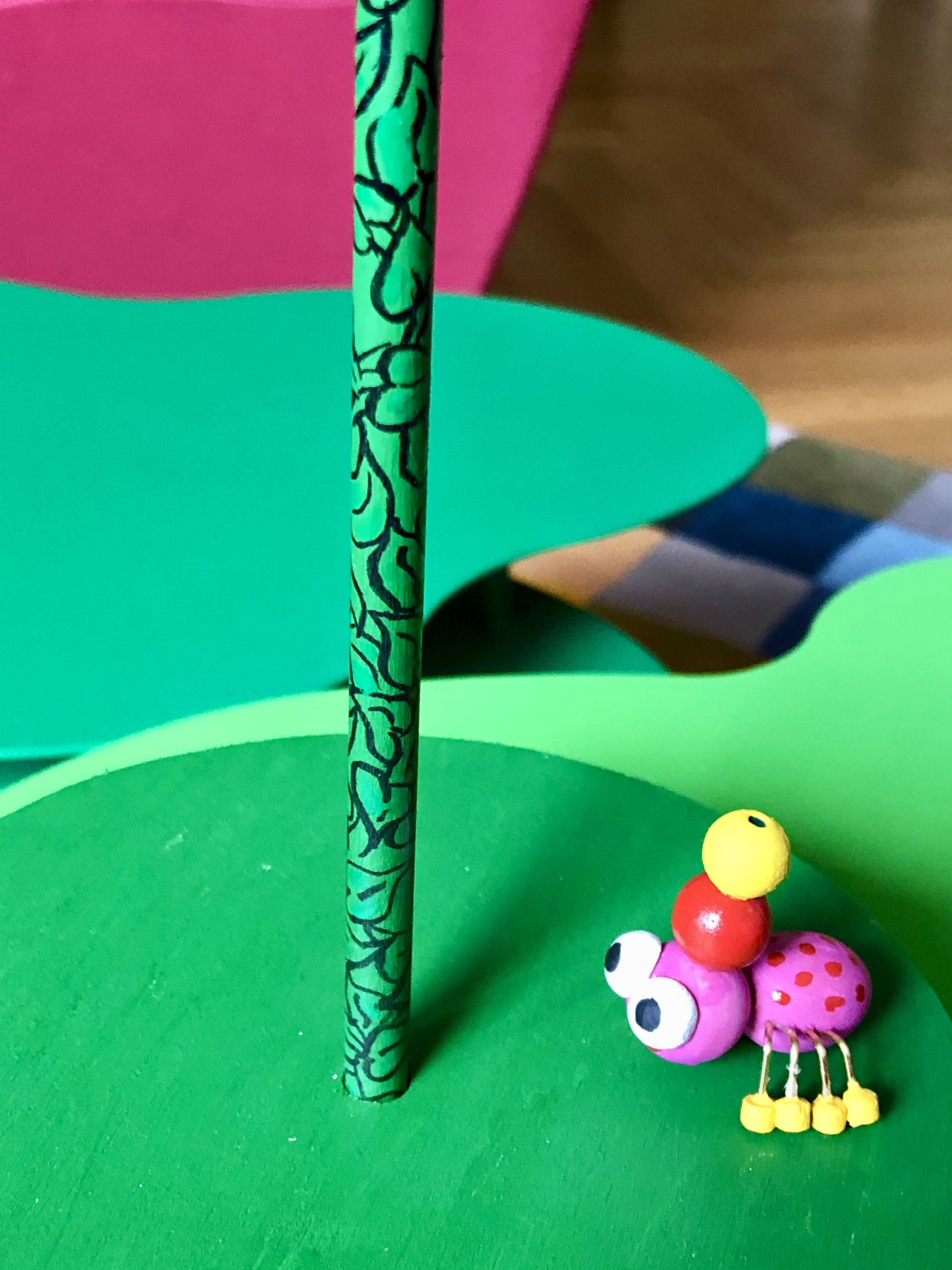
Then she saw this bare tree and thought this will do nicely.
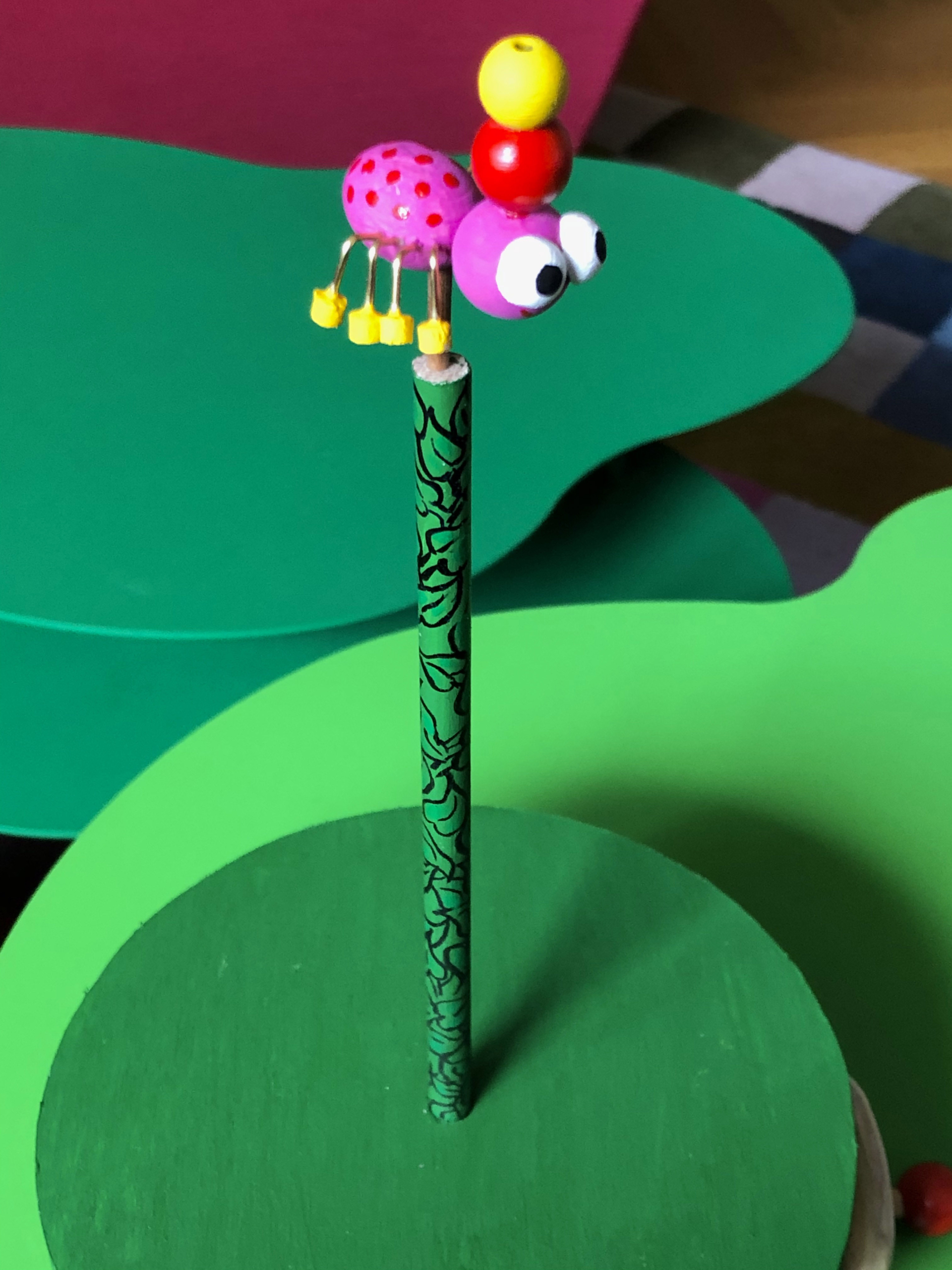
With a little bit of work, there’ll be room for everyone.
The technical brief
The mechanism to turn the roundabout should be as simple as possible and should also drive a small music box mechanism which plays “Die Berliner Luft” – a tune that every Berliner knows about Berlin’s fantastic air. Spiders can have phenomenally large families, but I decided to go for a token number of nine baby spiders. What was good enough for Queen Victoria and Prince Albert is good enough for me. They had four boys and five girls, I will leave it to the viewer to decide on the sex of the various members of my little family. Brass rods will be strong enough to make the web and wood will do for the rest.
Making the family
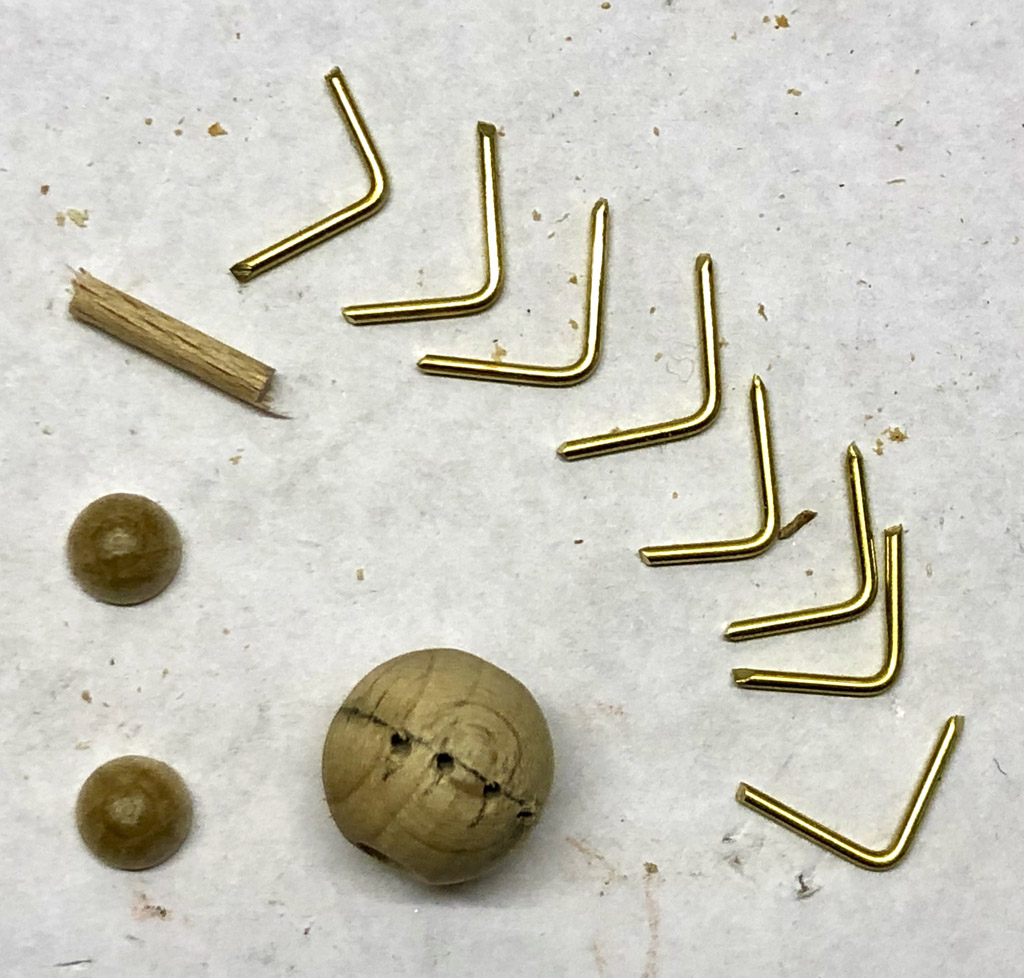
The parts to make a baby spider
Baby spiders are uncomplicated creatures made of a small drilled wooden ball for the body, two wooden hemispheres for big appealing eyes and eight pieces of bent brass rod for the legs. For the strand of web for them to dangle from, I used a cotton thread glued into the predrilled hole which I then filled with a piece of 3 mm dowel.
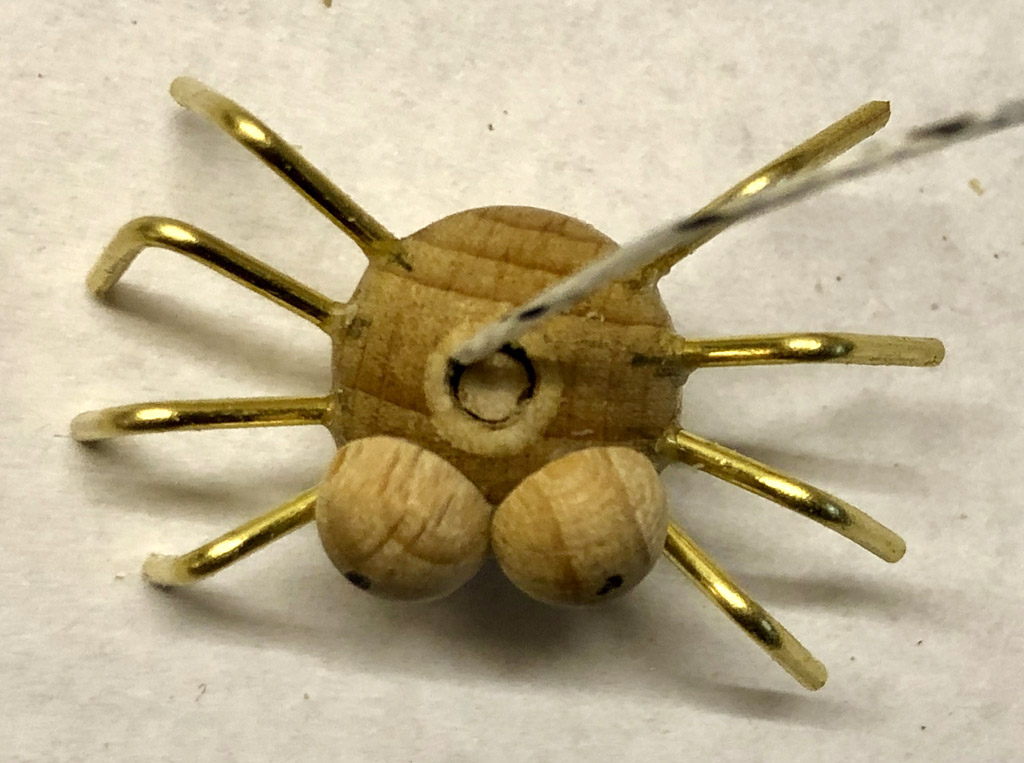
Finished baby spider waiting for its colour
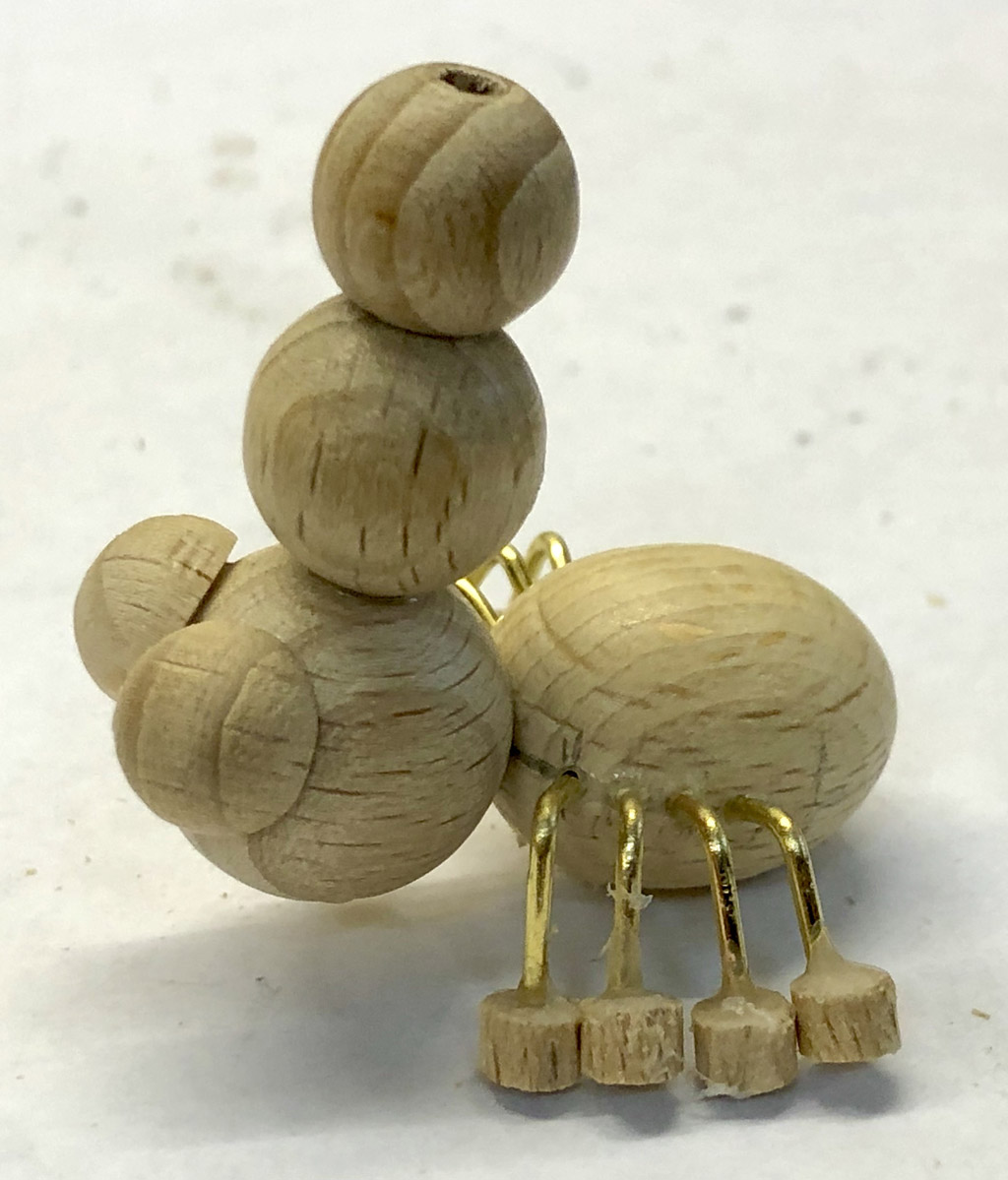
Fashion-conscious mum spider
Mum spider is larger of course, has a more stylish hairdo and shoes and a 3 mm hole in her underside to attach her to the top of the tree.
The web
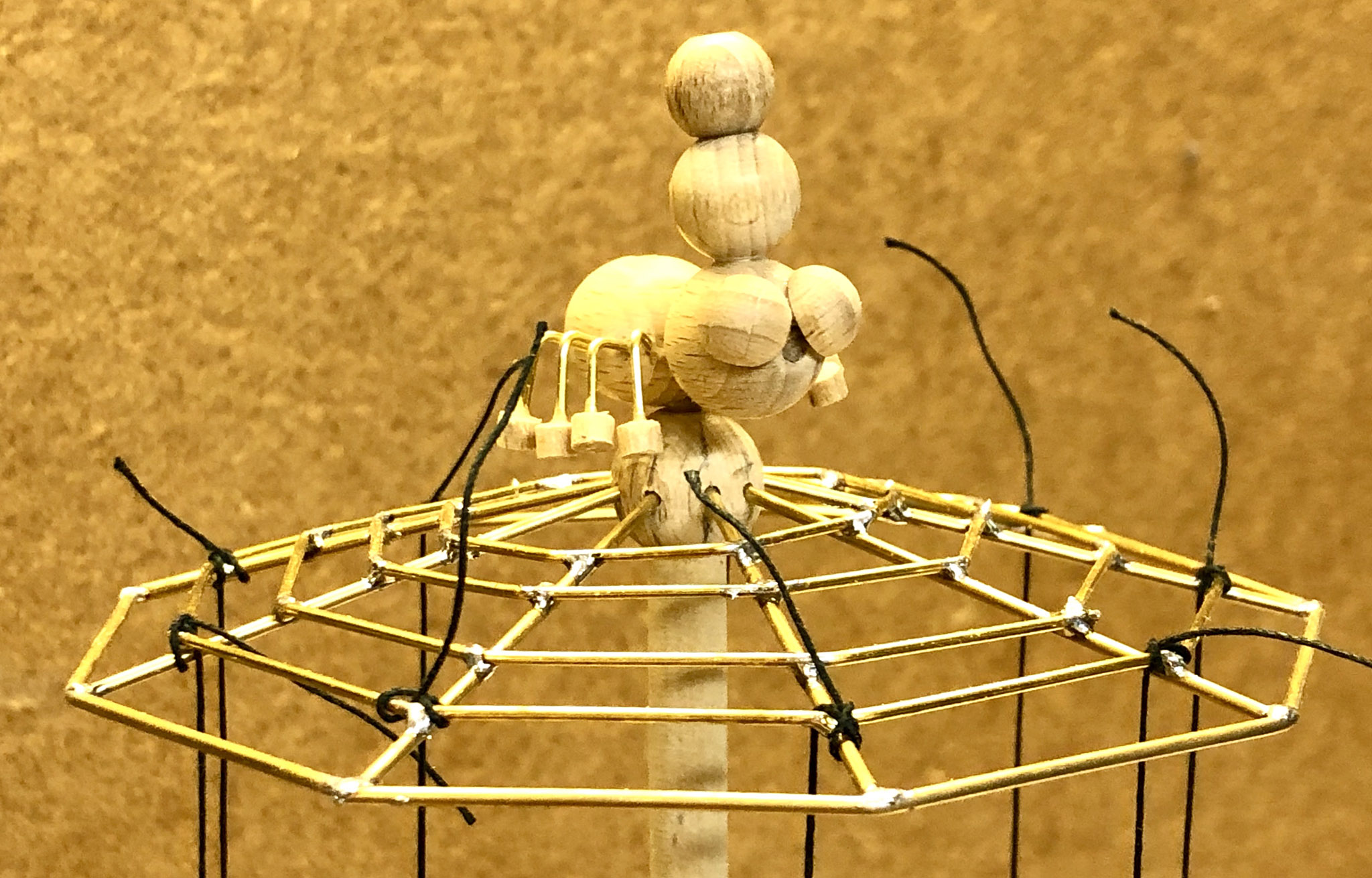
Spider mum and her freshly spun web
As there are nine spider children, the web has to have 9 segments. Mum spider needed a bit of help to make the web so I used slim brass rods, bent carefully to shape which I then soldered together, arranging for a slight “umbrella” shape. The web is mounted into a wooden ball which just rests on top of the tree, with a 3 mm dowel through the middle to hold mum spider, glued safely in position. As the ball is not glued, it is turned by friction. This allows mum to jig around and issue instructions to her brood and also allows the web to coast gracefully to a stop when the tree stops turning.
The base mechanism
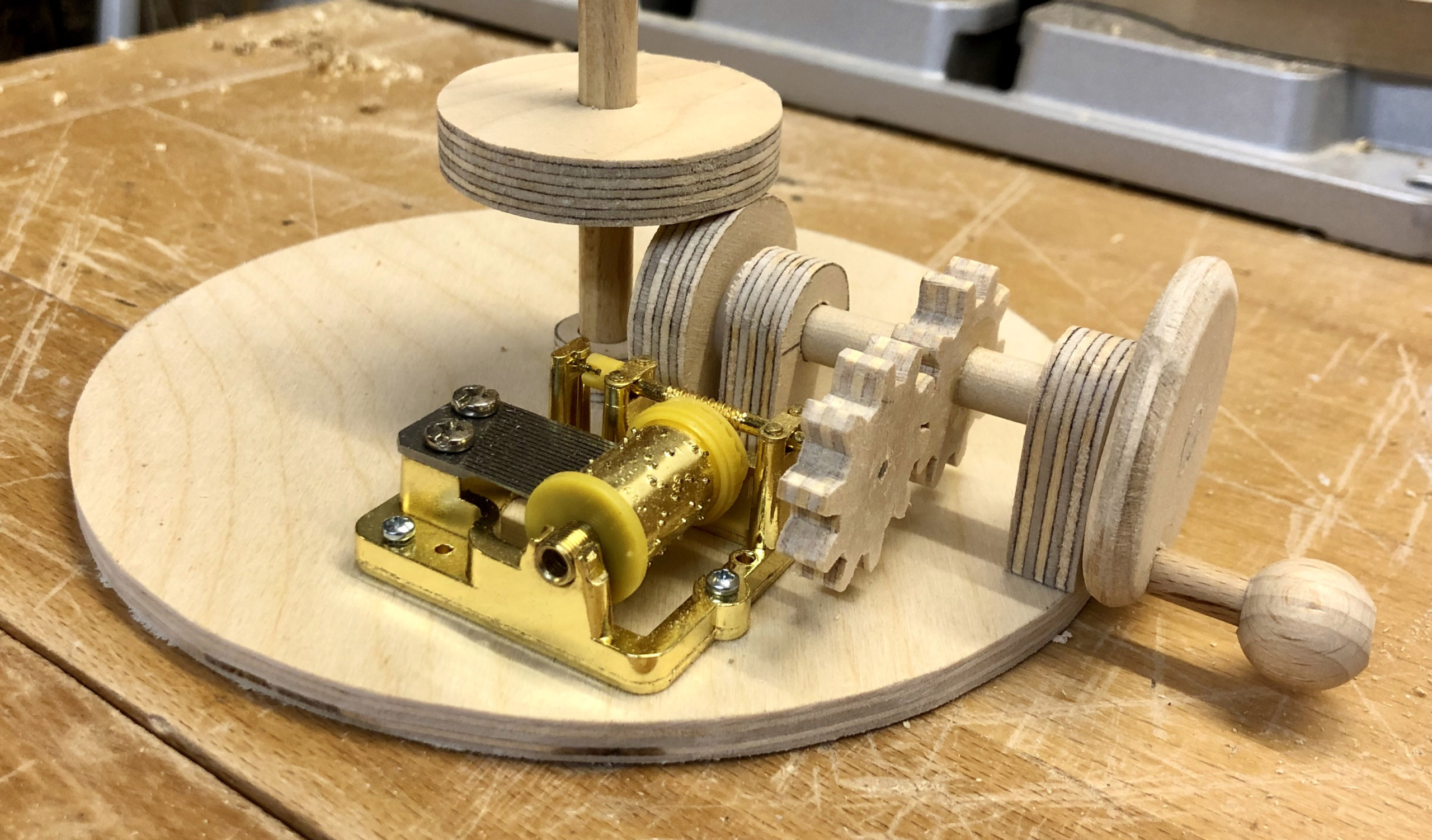
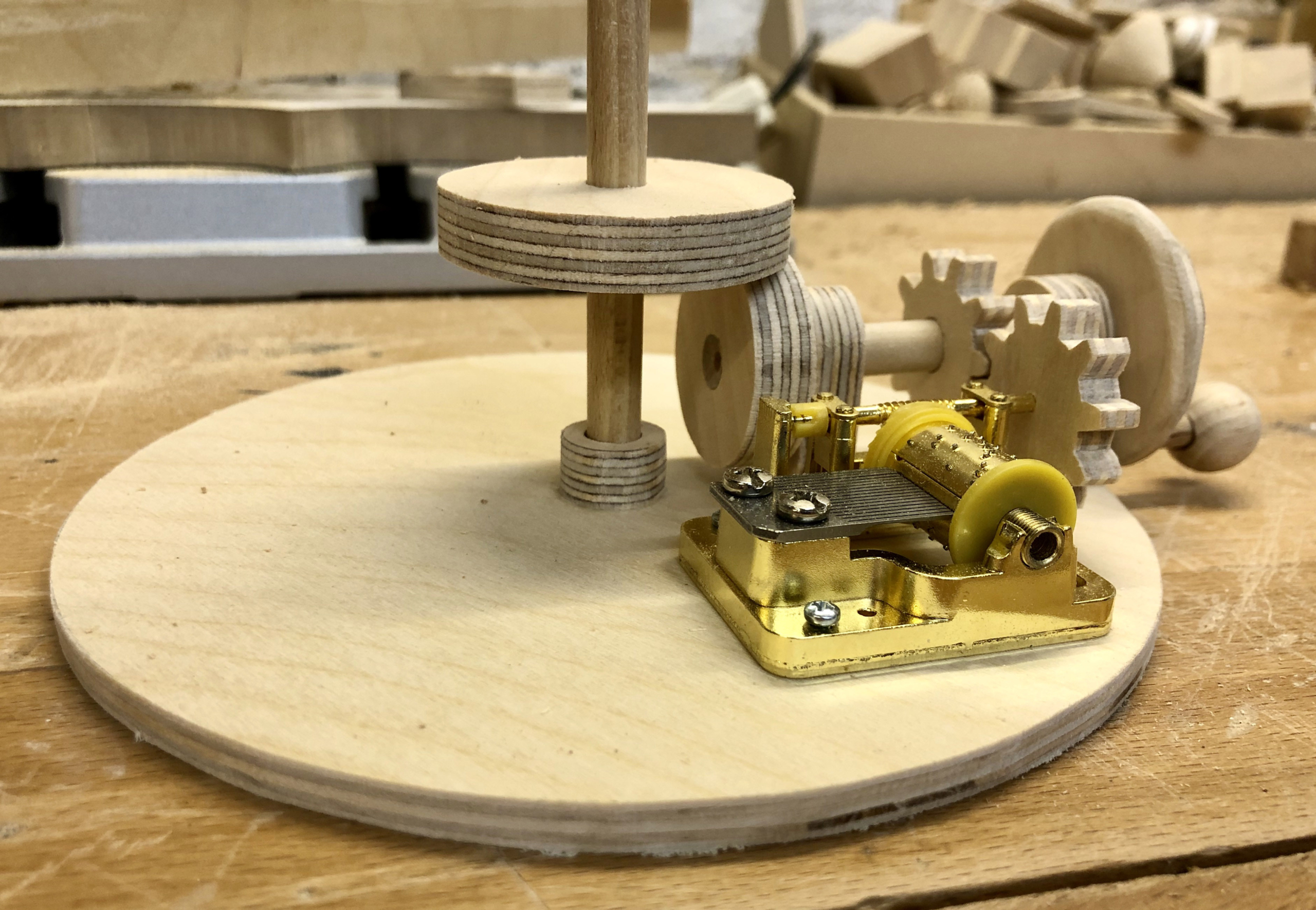
The bare mechanism
On a circular base, I mounted the small music box mechanism which I bought for a few euros. After cutting its bent metal handle off, I could push on a wooden cog which I cut using my bow saw. An identical cog drives it, when the handle is turned. Fortunately the music mechanism doesn’t mind if you turn it the wrong way, it just goes click, click instead of playing its merry tune. Turning the handle also rotates the drive wheel which is in frictional contact with the larger wheel glued to the vertical “tree”. I added a wooden bearing at the base of the tree which, together with the hole in the upper part of the base, keeps the tree nicely vertical.
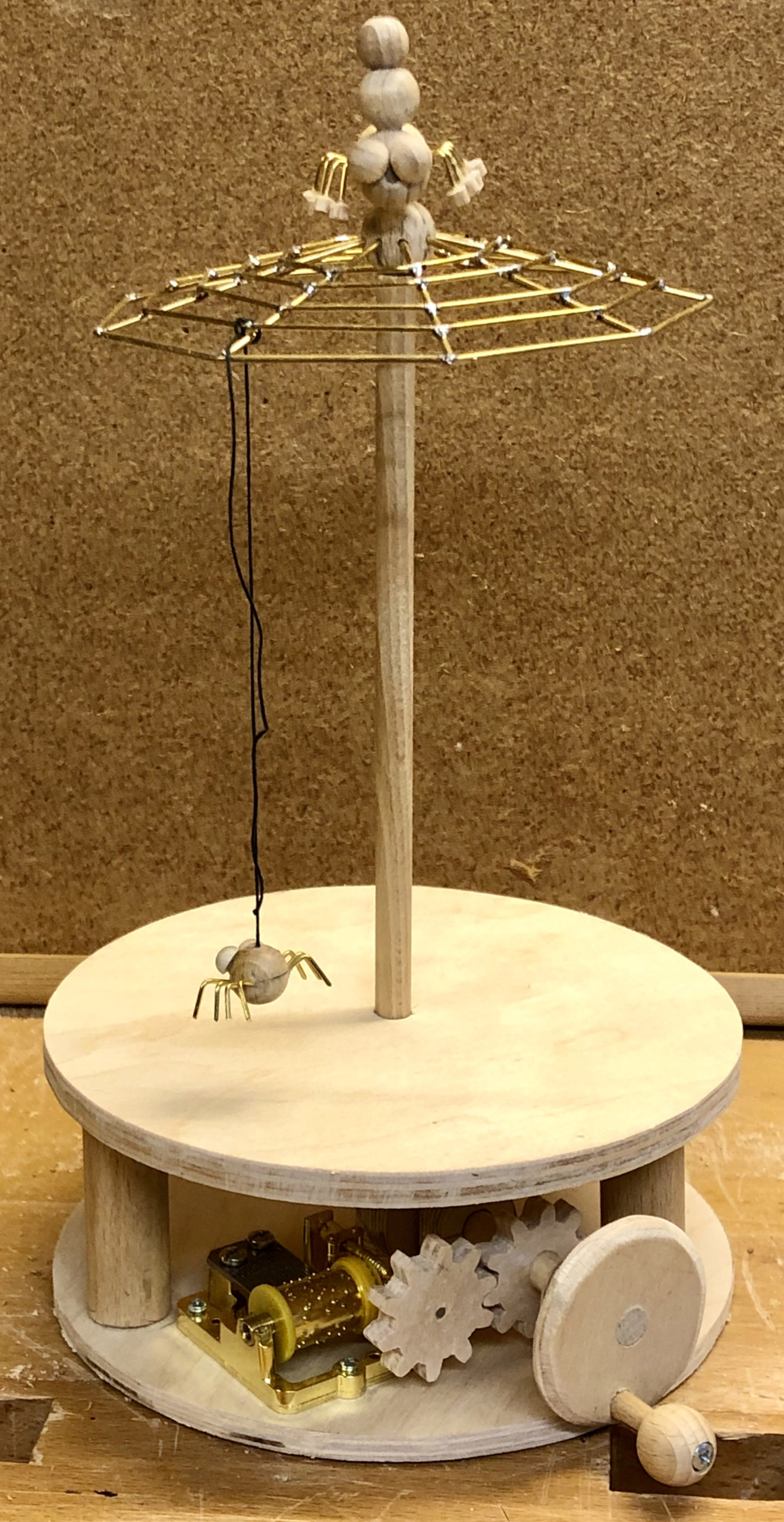
The assembled roundabout, ready for testing
The upper part of the base rests on three fairly chunky pieces of dowel. Careful alignment is required to ensure free rotation of the tree before gluing things together.
The video
Link to the video https://youtu.be/RCSqZP25s30
Images to download
https://www.wordwise.de/Spider_roundabout_images.zip
